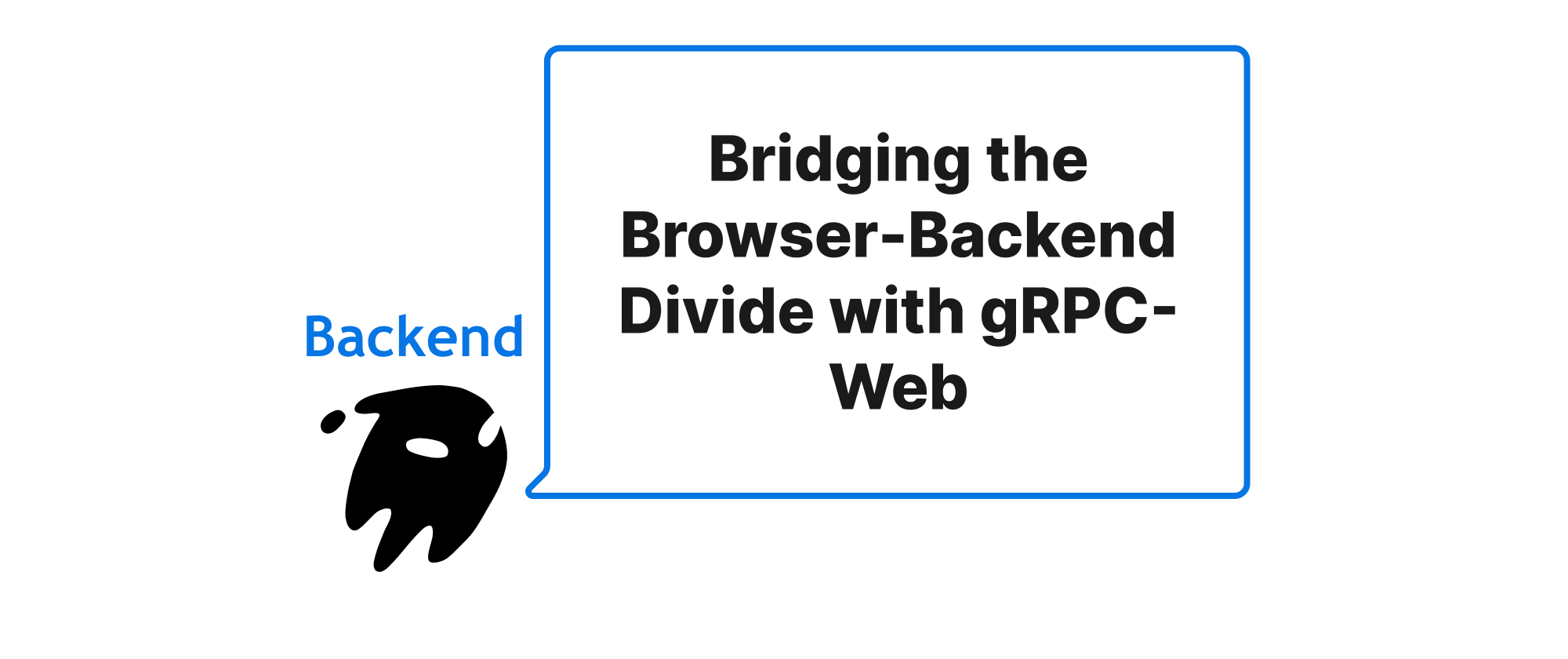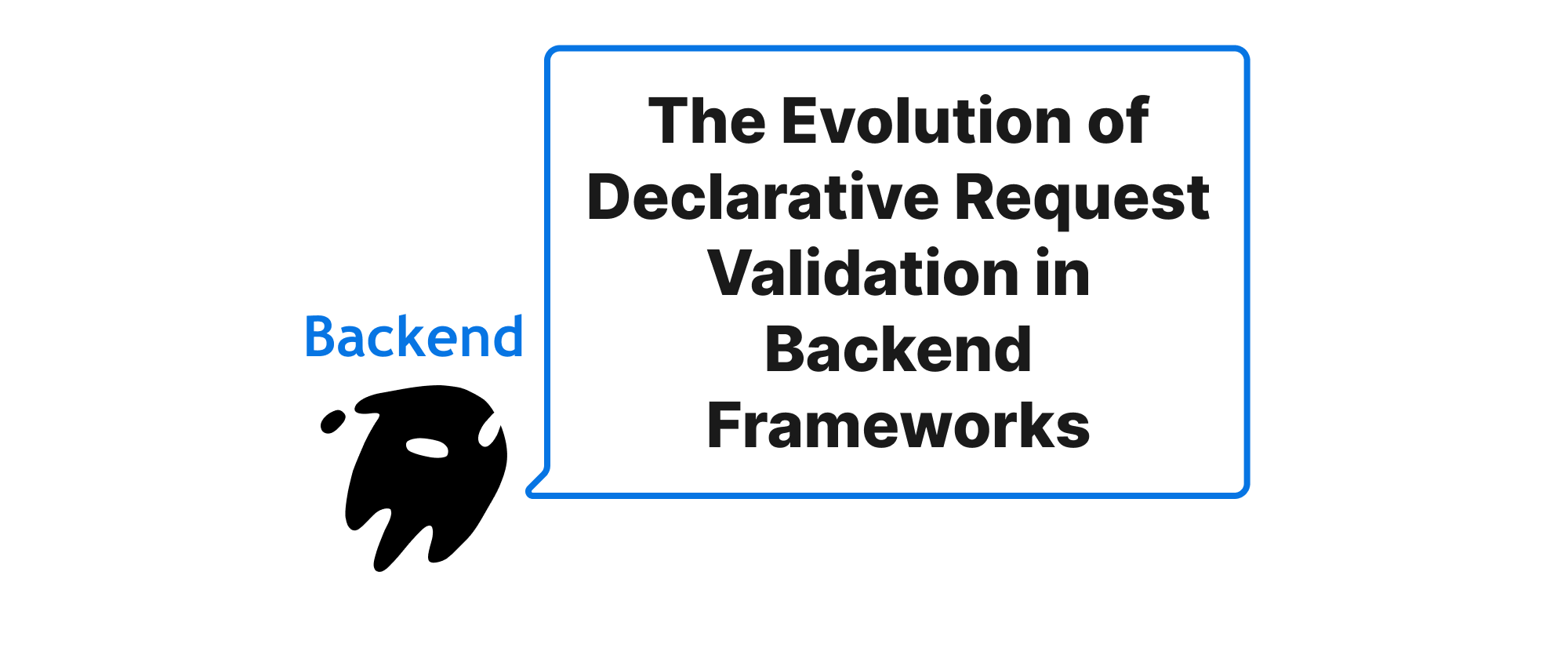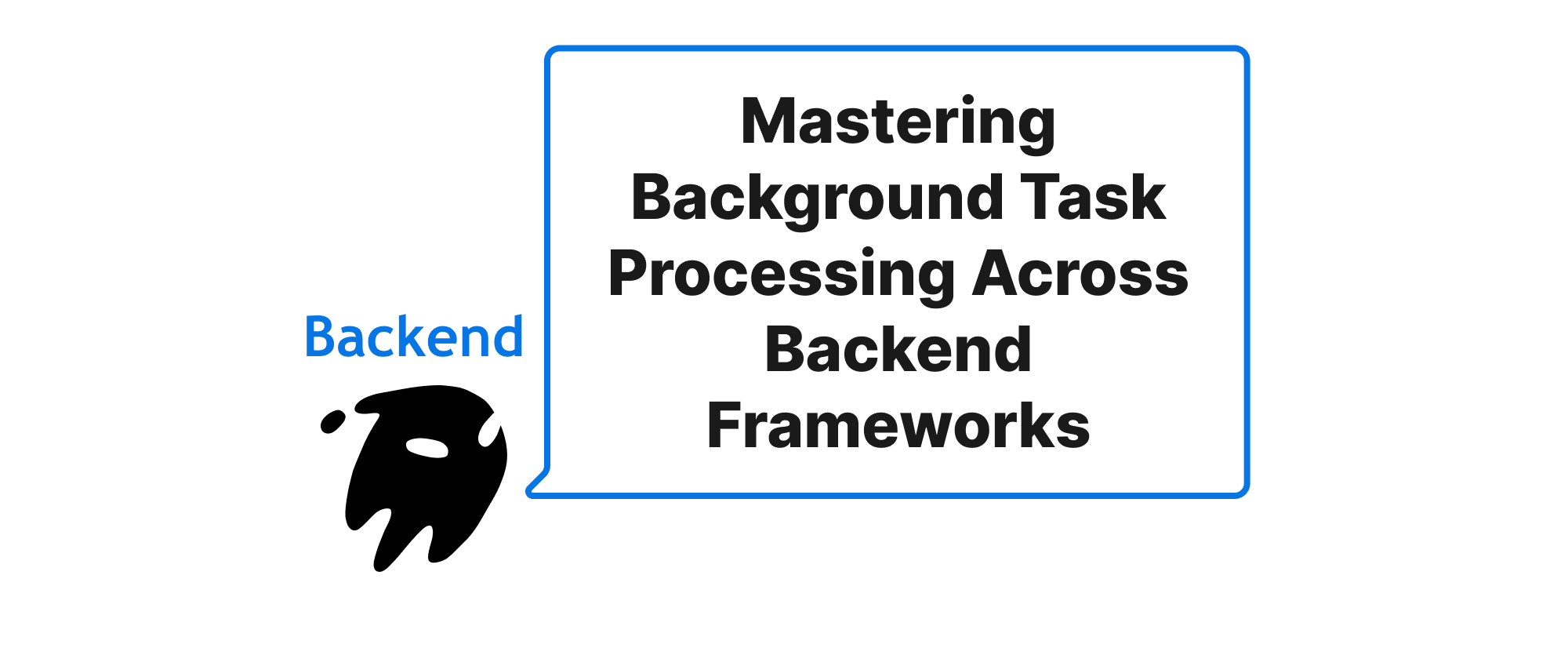Bridging the Browser-Backend Divide with gRPC-Web
Grace Collins
Solutions Engineer · Leapcell

Introduction
In the evolving landscape of web development, the demand for high-performance, real-time, and efficient communication between clients and servers has intensified. While traditional RESTful APIs have long served as the backbone, their limitations, especially concerning serialization overhead and lack of robust type-safety, are becoming increasingly apparent for modern, complex applications. Enter gRPC, a powerful, open-source universal RPC framework developed by Google. gRPC leverages Protocol Buffers for efficient serialization and HTTP/2 for multiplexing and streaming, leading to significantly improved performance and developer experience. However, a direct bridge for web browsers to communicate with gRPC services has historically been a challenge due to architectural differences between HTTP/1.1 (predominant in browsers) and HTTP/2 (required by gRPC). This very challenge birthed gRPC-Web, a crucial technology that enables browser-based applications to harness the power of gRPC directly. This article will explore the mechanisms, benefits, and practical implementation of gRPC-Web, demonstrating how it seamlessly bridges the gap between browser frontend and gRPC backend services.
Understanding the Core Concepts
Before diving into the specifics of gRPC-Web, it's essential to understand the underlying technologies it leverages:
- gRPC (gRPC Remote Procedure Call): A modern open-source high-performance RPC framework that can run in any environment. It enables client and server applications to communicate transparently, and makes it easier to build connected systems. gRPC is based on the idea of defining a service, specifying the methods that can be called remotely with their parameters and return types. It uses Protocol Buffers as its Interface Definition Language (IDL) and message interchange format.
- Protocol Buffers (Protobuf): A language-neutral, platform-neutral, extensible mechanism for serializing structured data. You define your data structure in a
.protofile, and Protobuf compilers generate code in various languages (Go, Java, Python, C++, C#, JavaScript, etc.) for serialization and deserialization, ensuring strong type-safety. - HTTP/2: The second major version of the HTTP network protocol. Key improvements over HTTP/1.1 include binary framing, multiplexing (sending multiple requests/responses over a single connection), server push, and header compression, which all contribute to significant performance gains. gRPC primarily relies on HTTP/2 for its efficient communication.
- gRPC-Web: A proxy-based solution that allows web browsers to interact with gRPC services. Browsers primarily communicate over HTTP/1.1 and lack native support for HTTP/2 features like trailers and arbitrary data frame access, which gRPC critically uses. gRPC-Web works by adding a small layer of code on the client side (JavaScript) and often requires a proxy (like Envoy or a custom gRPC-Web proxy) to translate HTTP/1.1 requests from the browser into HTTP/2 requests understood by the gRPC backend.
The Principle of gRPC-Web Communication
The core principle behind gRPC-Web is translation. A browser, constrained by HTTP/1.1, cannot directly speak the HTTP/2 protocol that gRPC needs. gRPC-Web introduces a client-side library that marshals gRPC requests into a format compatible with HTTP/1.1 (typically POST requests with a specific Content-Type), sends them to a proxy server, which then translates these requests into HTTP/2 for the gRPC backend. The response from the gRPC backend follows the reverse path: HTTP/2 response to the proxy, translated to HTTP/1.1 for the browser, and finally unmarshaled by the gRPC-Web client library.
This process involves:
- Protocol Buffer Definition: Defining your service methods and message structures in a
.protofile. - Code Generation: Using
protoc(the Protocol Buffer compiler) along with theprotoc-gen-grpc-webplugin to generate client-side JavaScript code (or TypeScript definitions) and server-side gRPC artifacts. - Client-Side gRPC-Web Library: A JavaScript library that leverages the generated code to construct gRPC requests in a browser-friendly HTTP/1.1 format.
- gRPC-Web Proxy: An intermediary server (like Envoy or a dedicated gRPC-Web proxy) that sits between the browser and the gRPC backend. It handles the protocol translation from HTTP/1.1 (from the browser) to HTTP/2 (to the gRPC backend) and vice versa.
Implementation Steps with an Example
Let's illustrate this with a simple "Greeter" service example.
1. Define the Protobuf Service
Create a greet.proto file:
syntax = "proto3"; option go_package = "./;greet"; // For Go backend package greet; service Greeter { rpc SayHello (HelloRequest) returns (HelloReply); rpc SayHellosStream (HelloRequest) returns (stream HelloReply); // Example of server streaming } message HelloRequest { string name = 1; } message HelloReply { string message = 1; }
2. Generate Server-Side Code (Go Example)
You'd typically use protoc to generate Go code for your gRPC server:
protoc --go_out=. --go-grpc_out=. greet.proto
This generates greet.pb.go and greet_grpc.pb.go.
3. Implement the gRPC Server (Go Example)
package main import ( "context" "fmt" "log" "net" "time" "google.golang.org/grpc" pb "your_module_path/greet" // Replace with your actual module path ) type server struct { pb.UnimplementedGreeterServer } func (s *server) SayHello(ctx context.Context, in *pb.HelloRequest) (*pb.HelloReply, error) { log.Printf("Received: %v", in.GetName()) return &pb.HelloReply{Message: "Hello " + in.GetName()}, nil } func (s *server) SayHellosStream(in *pb.HelloRequest, stream pb.Greeter_SayHellosStreamServer) error { log.Printf("Received streaming request for: %v", in.GetName()) for i := 0; i < 5; i++ { resp := &pb.HelloReply{Message: fmt.Sprintf("Streaming Hello %s, message %d", in.GetName(), i+1)} if err := stream.Send(resp); err != nil { return err } time.Sleep(500 * time.Millisecond) } return nil } func main() { lis, err := net.Listen("tcp", ":50051") if err != nil { log.Fatalf("failed to listen: %v", err) } s := grpc.NewServer() pb.RegisterGreeterServer(s, &server{}) log.Printf("server listening at %v", lis.Addr()) if err := s.Serve(lis); err != nil { log.Fatalf("failed to serve: %v", err) } }
4. Generate gRPC-Web Client-Side Code (JavaScript Example)
You need to install grpc-web and protoc-gen-grpc-web:
npm install grpc-web go install github.com/grpc/grpc-web/protoc-gen-grpc-web@latest
Then, generate JavaScript code for the browser:
protoc -I=. greet.proto --js_out=import_style=commonjs,binary:. --grpc-web_out=import_style=commonjs,mode=grpcwebtext:.
--js_out=import_style=commonjs,binary:.: Generates message classes.--grpc-web_out=import_style=commonjs,mode=grpcwebtext:.: Generates service client and stub code for gRPC-Web.grpcwebtextis a common mode that sends messages as base64 encoded Protobufs in text format, making it easier for proxies to debug.grpcwebmode sends raw binary.
This command generates greet_pb.js and GreetServiceClientPb.js (for the gRPC-Web client).
5. Configure a gRPC-Web Proxy (Envoy Example)
Envoy is a popular choice for a gRPC-Web proxy. Here's a basic envoy.yaml configuration:
admin: access_log_path: /tmp/admin_access.log address: socket_address: { address: 0.0.0.0, port_value: 9901 } static_resources: listeners: - name: listener_0 address: socket_address: { address: 0.0.0.0, port_value: 8080 } # Port for browser traffic filter_chains: - filters: - name: envoy.filters.network.http_connection_manager typed_config: "@type": type.googleapis.com/envoy.extensions.filters.network.http_connection_manager.v3.HttpConnectionManager stat_prefix: ingress_http codec_type: AUTO route_config: name: local_route virtual_hosts: - name: local_service domains: ["*"] routes: - match: { prefix: "/" } route: cluster: grpc_backend # This is crucial for gRPC-Web grpc_web: {} cors: allow_origin_string_match: - prefix: "*" allow_methods: GET, PUT, DELETE, POST, OPTIONS allow_headers: keep-alive,user-agent,cache-control,content-type,content-transfer-encoding,custom-header-1,x-accept-content-transfer-encoding,x-accept-response-streaming,x-user-agent,x-grpc-web max_age: "1728000" expose_headers: custom-header-1,grpc-status,grpc-message http_filters: - name: envoy.filters.http.router typed_config: "@type": type.googleapis.com/envoy.extensions.filters.http.router.v3.Router clusters: - name: grpc_backend connect_timeout: 0.25s type: LOGICAL_DNS # Or STATIC, if backend IP is fixed lb_policy: ROUND_ROBIN # The actual gRPC backend runs on port 50051 load_assignment: cluster_name: grpc_backend endpoints: - lb_endpoints: - endpoint: address: socket_address: address: 127.0.0.1 # IP of your gRPC backend port_value: 50051 # Enable HTTP/2 for gRPC backend communication http2_protocol_options: {}
Start Envoy: envoy -c envoy.yaml
6. Create the Browser Client (JavaScript/HTML Example)
<!DOCTYPE html> <html> <head> <title>gRPC-Web Greeter</title> <script src="https://unpkg.com/google-protobuf@3.12.2/google-protobuf.js"></script> <script src="https://unpkg.com/grpc-web@1.3.1/grpc-web.js"></script> </head> <body> <h1>gRPC-Web Greeter</h1> <input type="text" id="nameInput" placeholder="Enter your name" value="World"/> <button onclick="sayHello()">Say Hello</button> <button onclick="sayHelloStream()">Say Hello Stream</button> <div id="response"></div> <script type="module"> import {GreeterClient} from './GreetServiceClientPb.js'; import {HelloRequest, HelloReply} from './greet_pb.js'; const client = new GreeterClient('http://localhost:8080', null, null); // Envoy proxy URL window.sayHello = () => { const name = document.getElementById('nameInput').value; const request = new HelloRequest(); request.setName(name); client.sayHello(request, {}, (err, response) => { const responseDiv = document.getElementById('response'); if (err) { console.error(err); responseDiv.innerText = `Error: ${err.message}`; return; } responseDiv.innerText = `Greeting: ${response.getMessage()}`; }); }; window.sayHelloStream = () => { const name = document.getElementById('nameInput').value; const request = new HelloRequest(); request.setName(name); const stream = client.sayHellosStream(request, {}); const responseDiv = document.getElementById('response'); responseDiv.innerText = 'Streaming greetings...\n'; stream.on('data', (response) => { responseDiv.innerText += `\nStreaming Greeting: ${response.getMessage()}`; }); stream.on('end', () => { responseDiv.innerText += '\nStreaming finished.'; }); stream.on('error', (err) => { console.error(err); if (err.code === 2) { // UNKNOWN error code for stream reset responseDiv.innerText += '\nError: Stream stopped unexpectedly. Check console for details.'; } else { responseDiv.innerText += `\nError: ${err.message}`; } }); }; </script> </body> </html>
Place greet_pb.js, GreetServiceClientPb.js, and this index.html file in a directory and serve it with a simple web server (e.g., python3 -m http.server 8000).
Now, when you open http://localhost:8000 in your browser and click the buttons, your browser will send HTTP/1.1 requests to Envoy on port 8080. Envoy will then translate these to HTTP/2 and forward them to your gRPC server on port 50051. The responses will flow back the same way.
Application Scenarios
gRPC-Web is particularly beneficial in various scenarios:
- Single-Page Applications (SPAs): For data-intensive SPAs built with frameworks like React, Angular, or Vue, gRPC-Web offers superior performance and type-safety compared to REST, reducing boilerplate and improving maintainability.
- Microservices Architectures: When your backend is composed of gRPC microservices, gRPC-Web provides a consistent communication paradigm from the frontend all the way through the service mesh.
- Real-time Dashboards and Analytics: Server streaming, enabled by HTTP/2 and supported by gRPC-Web, is excellent for pushing real-time updates to dashboards without the overhead of polling or complex WebSocket implementations for simple stream requirements.
- Internal Tools: For internal developer tools or admin panels that interact heavily with gRPC backends, gRPC-Web can significantly speed up development and improve code quality.
Conclusion
gRPC-Web ingeniously solves the problem of enabling modern web browsers to communicate directly with high-performance gRPC backend services. By leveraging a proxy to bridge the HTTP/1.1 and HTTP/2 divide, it brings the benefits of Protocol Buffers' strong typing and gRPC's efficiency, streaming capabilities, and performance directly to browser-based applications. This allows developers to build more robust, performant, and maintainable web applications, truly unifying the client-server communication stack under the gRPC paradigm.


